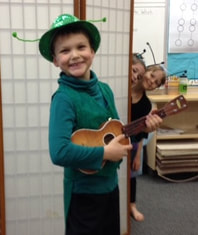
The song leader had probably asked them to sing NICE and LOUD when they were first learning, but they only perfected the LOUD part. The pitches that were between Middle C up to F were pretty close to being matched, but those down around G and A below Middle C were croaked and the notes above were monotone yelled. It wasn't NICE at all. The sad part was that they were singing a sacred song about the miracle of Jesus' Atonement. I doubt that the children actually understood that they were singing words that should be sung with absolute regard and reverence for the majesty of what the Savior did for us. The song leader tried to tell them that they needed to sing NICE. But it might be too late to get them to relearn something that they are having so much fun doing.
In general, children emulate what they hear. If a child grows up in a culture that uses chants and throat clucks for their singing, that is what they think is normal and good. If children grow up listening to only their culture's pop music, that is what they are accustomed to and is how they want to sing. Singing sacred music, reverently, requires a different approach. And singing any music in tune, requires expert teaching strategies. There is a danger in encouraging children to sing along with grown-up voices on professional recordings. The ranges adults sing in are not a fit for most children. The kids end up trying to sing too low or too high which is out of their physical range.
Most children have naturally higher and lighter ranges than adults and those usually fall within one octave and a few notes either direction from Middle C up to Treble C. The problem seems to be that the vast majority of American children are growing up only matching pitches in their speaking ranges and sadly they are not finding their head voices at all which would allow them to sing above F4 (only a fourth up from Middle C!). That's a singing range of about four notes, folks. They are not matching pitches lower than middle C -- just grunting. And they are not matching pitches above F -- just screeching out a monotone. They don't realize what it takes to match pitches because they have not learned to hear by singing in their "head voice" register.
Children can learn to match pitches when encouraged to find their light, high HEAD VOICE. Once they get acquainted with vocalizing above F in a sort of "siren" type sound, they can open the pathways to matching pitches. That song leader needs to get them matching pitches in their head voice range before turning them loose on a song so familiar in style that they lapse into pop power ballad mode. I hope she can reign them back in and help them sing NICE.


 RSS Feed
RSS Feed